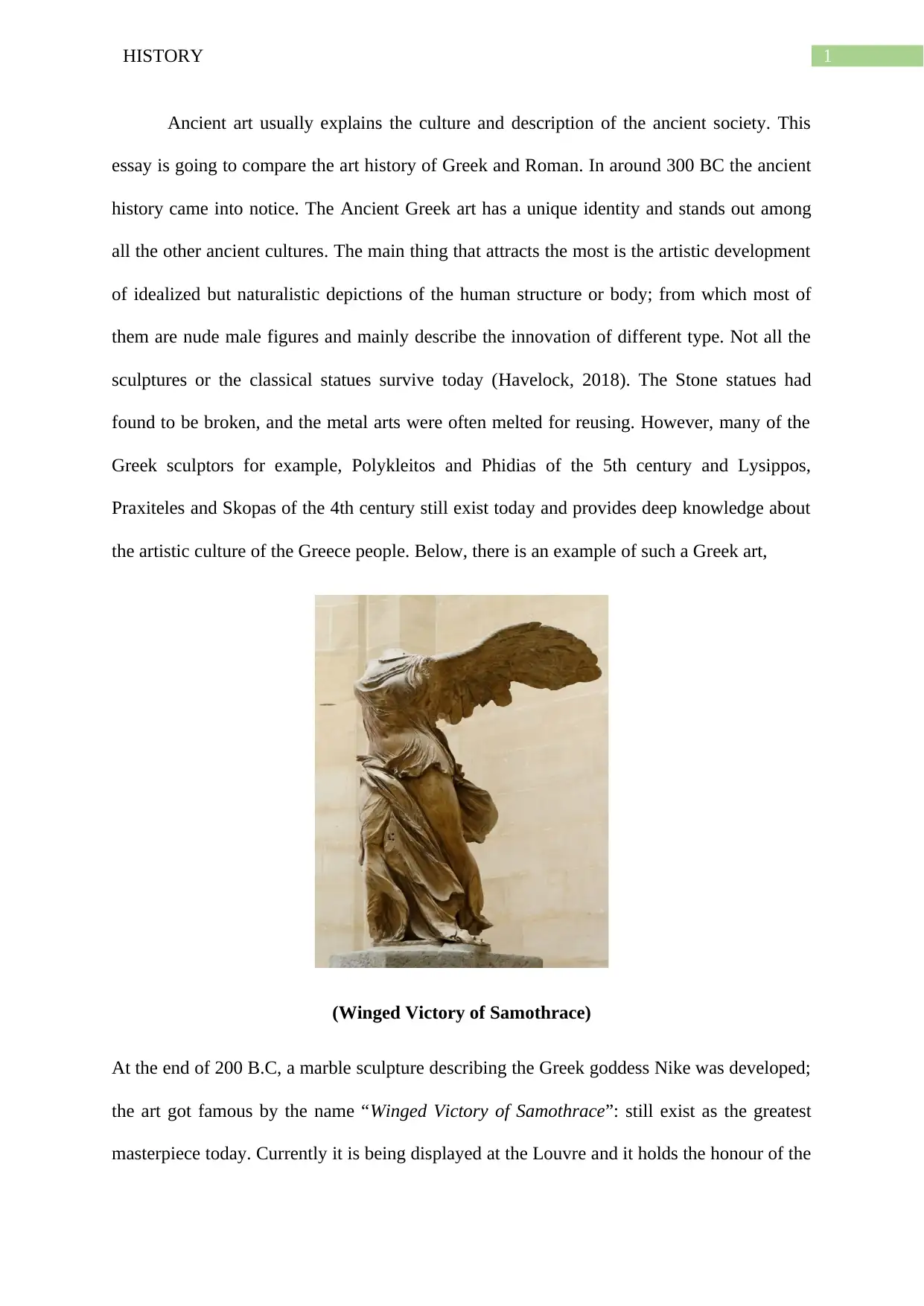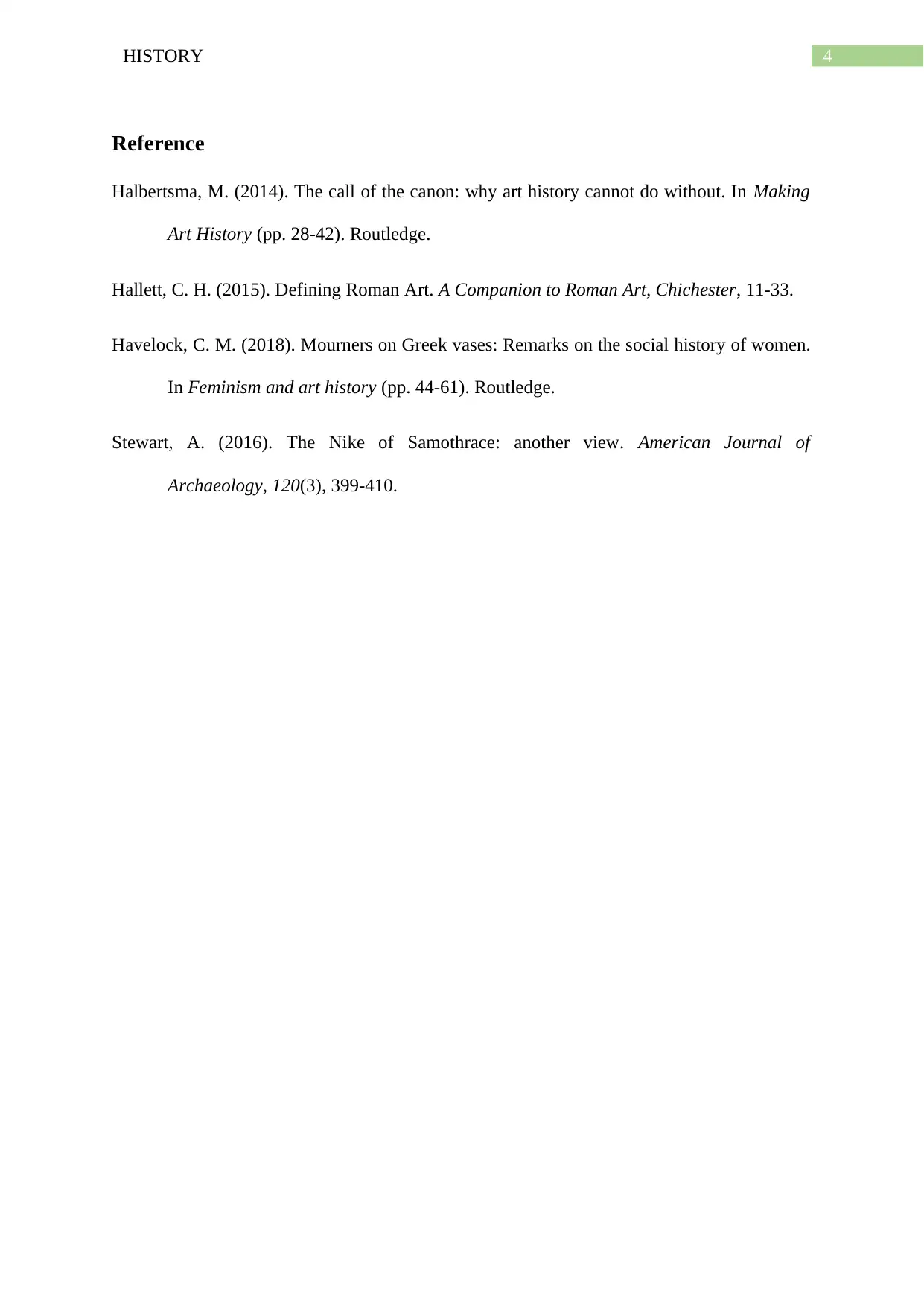Art History: Comparing the Artistic Styles of Ancient Greece and Rome
VerifiedAdded on 2022/08/17
|5
|639
|7
Essay
AI Summary
This essay delves into a comparative analysis of the art histories of ancient Greece and Rome. It begins by highlighting the distinct characteristics of Ancient Greek art, emphasizing its idealized yet naturalistic depictions of the human form, exemplified by sculptures like the Winged Victory of Samothrace. The essay then contrasts this with Roman art, exploring its diverse range of painting, architecture, mosaic work, and sculpture, with a focus on artworks like the Doryphoros, a Roman copy of a Greek original. The comparison highlights the cultural influences, artistic styles, and significant artworks that define each civilization's artistic legacy. The essay references key scholarly works to support its arguments, providing a comprehensive overview of the subject matter. The essay explores the cultural context and artistic significance of these ancient art forms, offering insights into their enduring impact on Western art history. This essay provides a detailed overview of the art historical context of the time period, and explores the relationship between the two cultures, highlighting how Roman art was influenced by Greek styles.
1 out of 5






![[object Object]](/_next/static/media/star-bottom.7253800d.svg)